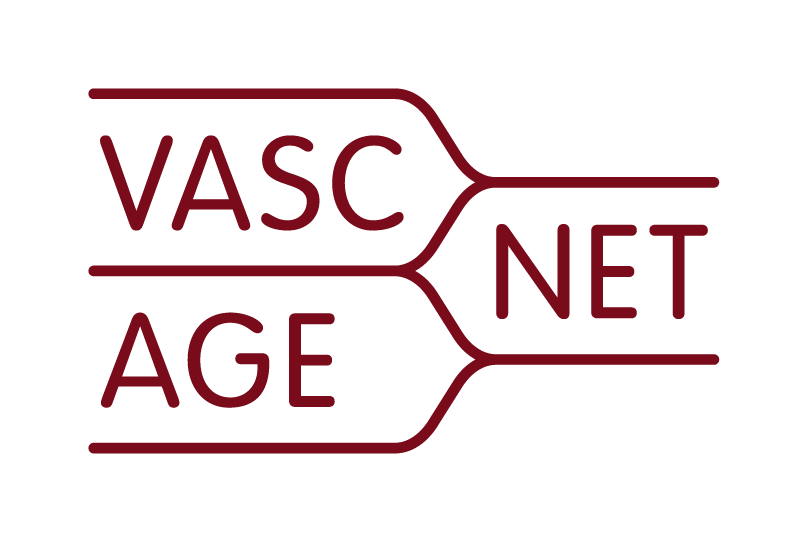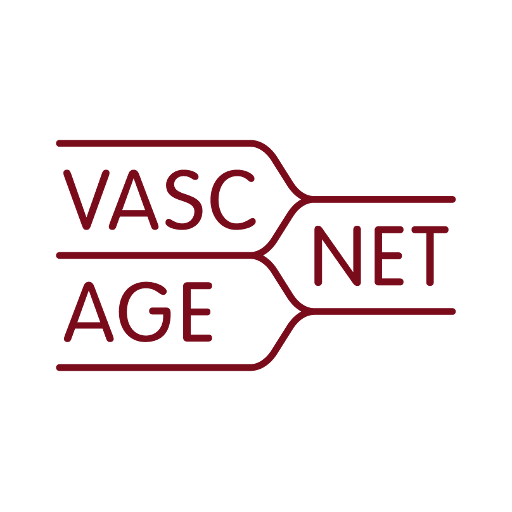Research Coordination Objectives
The main objectives of the COST Action VascAgeNet are to (i) coordinate European research on vascular ageing in an international context, (ii) connect and promote knowledge transfer between the researcher, practitioner and companies, (iii) coordinate ongoing research in an interdisciplinary (medical, engineering, business), inter-country, and intersectoral (academic, research, business) network, (iv) bring together nationally-funded research projects in a collaborative pan-European activity. VascAgeNet will establish a multidisciplinary network that will (click on keywords below to see details):
- Identify and refine new technologies for the assessment of vascular ageing.
- Achieve better understanding of the underlying mechanisms of vascular ageing and, thus, advance its clinical relevance.
- Provide new evidence about the pathophysiological mechanisms leading to the development of vascular ageing to be employed for the study on new therapeutic strategies.
- Create a consensus document on existing vascular ageing measurement methods to be used in clinical practice and on identified gaps.
- Create a consensus document on mathematical models to describe cardiovascular hemodynamics.
- Design and implement a concept for a data registry to enable multi-centre research.
- Define innovative big data approaches for the identification of vascular ageing risk factors to be employed for the implementation of prevention and screening programs.
- Initiate peer network driven intervention studies on vascular ageing using the multiplicative effect of the network.
- Facilitate the development of new techniques/devices via validation (e.g., head-to-head comparison).
- Establish priorities for future translational research via the identification and promotion of basic and pre-clinical experimental protocols.
- Promote vascular ageing prevention with a particular focus on end-users (patients), those who interact with them (e.g., specialists working in medical practices, general practitioners, nurses, pharmacists, patient-organisations, journalists), low-income countries and various health care systems.
- Explore the opportunities for coordinated vascular ageing research that corresponds to the Horizon 2020 and Horizon Europe agenda and other under-explored funding schemes.
Capacity-building Objectives
The capacity-building objectives of VascAgeNet will ensure the promotion of a vascular ageing culture, spreading the technological advances obtained to all countries. In order to improve the clinical and social impact of the vascular ageing concept, the network will foster strategies aiming at scientific societies, governments, health care systems and the research community. VascAgeNet will, thus, establish a multidisciplinary network that will (click on keywords below to see details) :
- Develop an interdisciplinary collaborative network covering excellence in science and technology across Europe to foster joint research concerning arterial structure, function and physiology to enhance and exchange knowledge and expertise.
- Combine different research fields with start-ups/industry to create a multidisciplinary and translational approach for the achievement of important breakthroughs.
- Offer interdisciplinary opportunities for cooperation between scientists and physicians/clinicians.
- Bring basic research, applied research and industry together, to translate research from bench to bedside.
- Attract the next generation of Early Career Investigators (ECIs) to research in arterial structure and physiology and support their interdisciplinary education through training schools, workshops, conferences, etc.
- Disseminate knowledge and experience resulting from this network by publications (reports and papers), workshops, seminars, a final conference, public awareness days, an easily accessible user-friendly website and social media.
- Proactively involve specific target groups (e.g., ECIs, students from Inclusiveness Target Countries (ITCs)), women, and teams from countries/regions with less capacity in the field of this COST Action.
- Enlarge the network by involving external experts (outside the network) in network activities, i.e., invitation to present talks, lectures and webinars.


